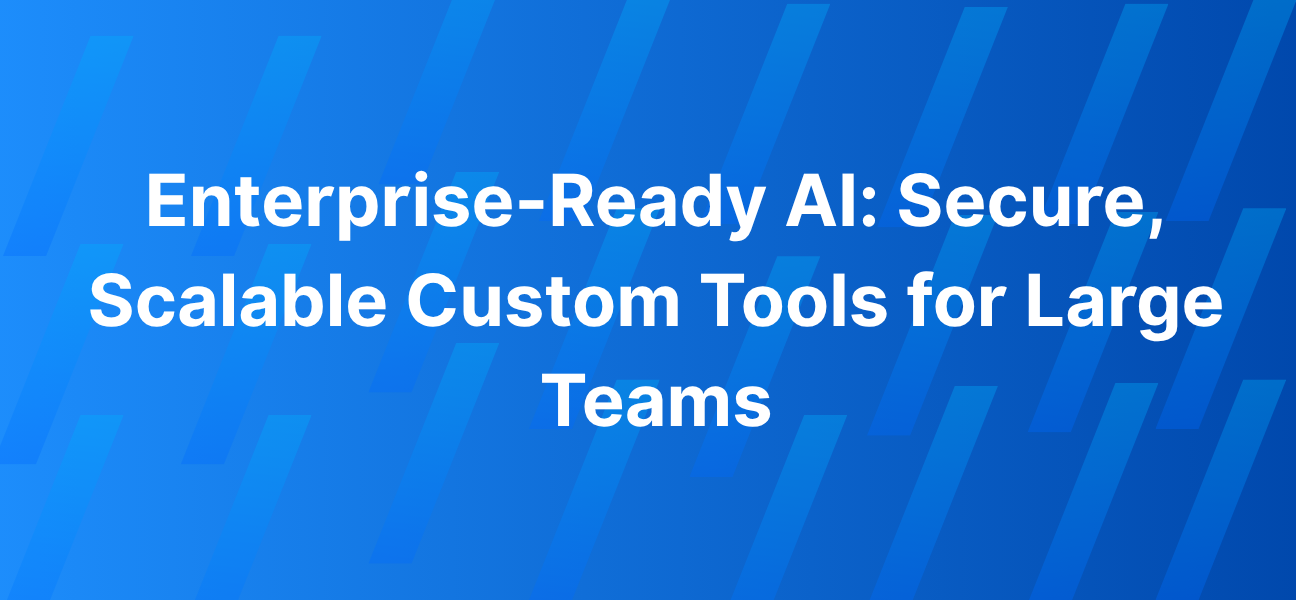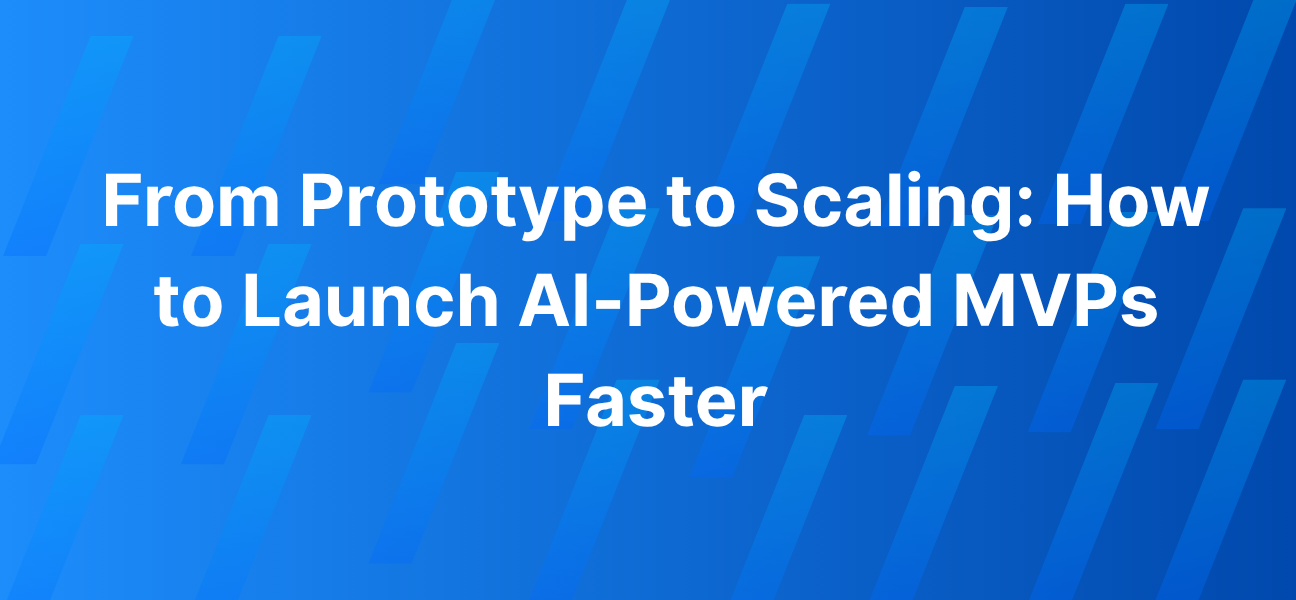For most organizations, SaaS (Software-as-a-Service) feels like the perfect answer to quick scaling.
Easy onboarding, zero infrastructure headaches, and predictable billing make SaaS tools the default choice. But there’s a hidden trap baked into many SaaS platforms: vendor lock-in.
Vendor lock-in happens when your company becomes so dependent on one provider’s platform, data storage, and workflows that switching becomes nearly impossible, without massive cost, disruption, and risk.
The antidote? Owning your data.
In this blog, we’ll dive into why data ownership beats vendor lock-in every time, the hidden risks of SaaS dependency, and how adopting custom AI-driven tools and flexible architecture future-proofs your business.
What is Vendor Lock-In?
Vendor lock-in occurs when your company relies on a single SaaS provider for critical systems like CRM, HR, finance, or analytics, and moving away would:
- Cost a fortune (migration fees, contract termination).
- Disrupt day-to-day operations (downtime, data loss).
- Require retraining employees on new systems.
- Risk losing proprietary data structures or integrations.
SaaS providers don’t advertise this, but many intentionally design ecosystems to trap you in. Common tactics include:
- Proprietary data formats instead of open standards.
- High exit/migration fees buried in contracts.
- Features only accessible at higher tiers.
- Integration limits, forcing you to buy add-ons.
Why Owning Your Data Beats Vendor Lock-In
Here are the top reasons data ownership is the smarter strategy long-term:
1. Full Control and Flexibility
When you own your data, you decide where it lives, how it’s structured, and which tools connect to it.
You’re not stuck with a provider’s roadmap or restrictions. Want to change CRMs? You migrate the data. Want to build a new AI model? You feed it your structured data without barriers.
2. Cost Savings Over Time
SaaS costs scale linearly with users and features.
A CRM at $50/user may feel cheap for 10 employees but quickly becomes $60,000+ per year for 100 users.
Owning your data lets you build custom tools without per-seat pricing. Over 3–5 years, custom solutions often become significantly cheaper.
Quick math example:
- SaaS CRM: 100 users × $60/user/month = $6,000/month → $72,000/year.
- Custom CRM build: $150,000 upfront + $20,000/year maintenance = $170,000 over 3 years.
- SaaS cost over 3 years = $216,000.
- Savings: $46,000 by year 3, with increasing ROI beyond.
3. Data Portability & Interoperability
Owning your data means you can plug into any system, ERP, HR, finance, or custom AI models, without restrictions.
You’re not limited to one provider’s integrations or APIs.
4. Reduced Business Risk
What if your SaaS provider:
- Gets acquired and changes pricing?
- Sunsets features you depend on?
- Experiences a breach or downtime?
Owning your data minimizes dependency on external business decisions.
Your workflows continue regardless of a vendor’s fate.
5. Competitive Advantage Through AI
Data is the lifeblood of modern AI. If your SaaS provider controls your data, you can’t easily use it to train predictive models, build custom analytics, or personalize customer experiences.
Owning your data unlocks AI-driven differentiation, a key factor in outperforming competitors.
Real-World Examples of Vendor Lock-In Pain
- Sales teams using a big-name CRM discover that exporting all historic customer interactions requires paid services, making switching nearly impossible.
- HR departments tied to payroll SaaS platforms find they can’t integrate with modern employee engagement tools unless they upgrade to enterprise tiers.
- Finance teams locked into SaaS accounting solutions struggle to comply with new regulatory reporting because the vendor’s reporting formats are rigid.
These scenarios cost companies millions in hidden fees, wasted time, and lost flexibility.
How to Own Your Data (Without Reinventing the Wheel)
Here’s a practical roadmap:
1. Use Open Standards & APIs
Choose tools that support open file formats, APIs, and exportability. Avoid providers that trap you with proprietary formats.
2. Centralize with a Data Warehouse
Maintain a single source of truth in a warehouse like Snowflake, BigQuery, or Postgres. Even if you use SaaS, sync all data back to your warehouse so you control the raw information.
3. Adopt Custom AI & Workflow Tools
Build lightweight, custom AI-driven tools on top of your owned data. Instead of paying for SaaS “AI add-ons,” tailor models to your processes, like lead scoring, financial forecasting, or employee churn prediction.
4. Modular Architecture
Don’t put all eggs in one basket. Use modular, API-driven services so replacing a tool is like swapping a LEGO block, not rebuilding the whole tower.
5. Regular Data Backups & Migration Testing
Back up your data periodically. Run test migrations every year so you know you can exit if needed.
KPIs to Track the Value of Data Ownership
- SaaS spend reduction (%) , track annual license savings.
- Data portability score , measure ease of exporting/migrating datasets.
- Integration success rate (%) , ability to connect new tools quickly.
- AI adoption rate , number of AI models running on owned data.
- Vendor dependency ratio , % of processes dependent on one SaaS vendor.
FAQ
Q: What is SaaS vendor lock-in?
A: SaaS vendor lock-in happens when your business becomes dependent on one provider’s platform and cannot switch without high cost or disruption.
Q: How do I avoid vendor lock-in?
A: Use open standards, sync data into a warehouse you control, and adopt modular custom AI tools that don’t depend on a single vendor.
Q: Is owning your data more expensive than SaaS?
A: Not long-term. While custom tools require upfront investment, they typically save money after 2–3 years by eliminating per-user SaaS pricing and giving you more flexibility.
Q: Why does data ownership matter for AI?
A: AI models are only as good as the data they’re trained on. Owning your data allows you to build tailored AI models that drive competitive advantage.
SaaS tools make sense in the early days, but as companies grow, vendor lock-in becomes a silent cost center.
Owning your data ensures you keep control, reduce costs, stay flexible, and unlock the true potential of AI.
At at20.ai, we help businesses transition from vendor dependency to data ownership and AI-powered autonomy. Whether it’s building custom CRMs, automating cross-functional workflows, or creating AI models on top of your data, we design solutions that put control back where it belongs, with you.Ready to escape SaaS lock-in? Connect with us at at20.ai and let’s build your roadmap to freedom.




